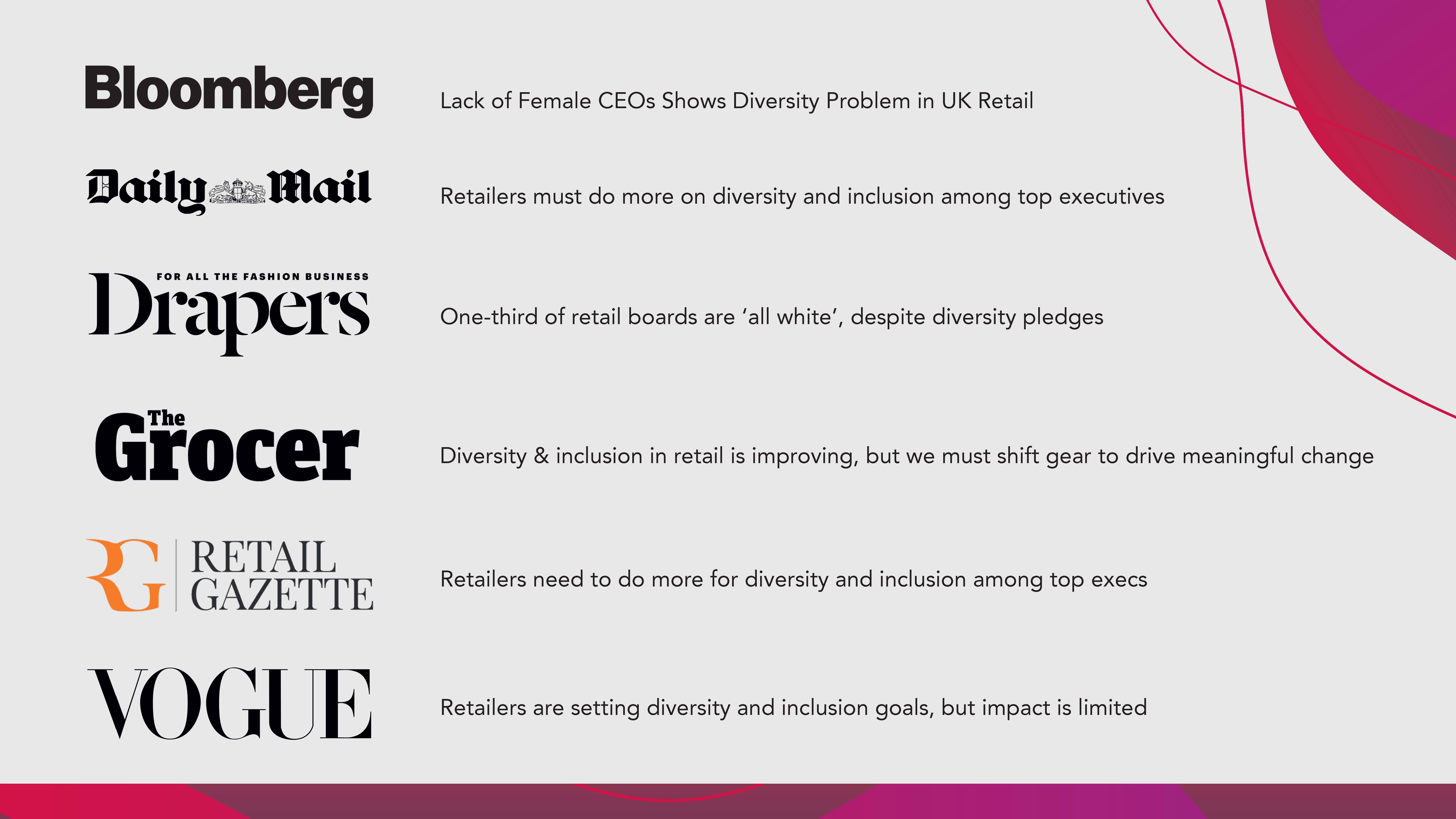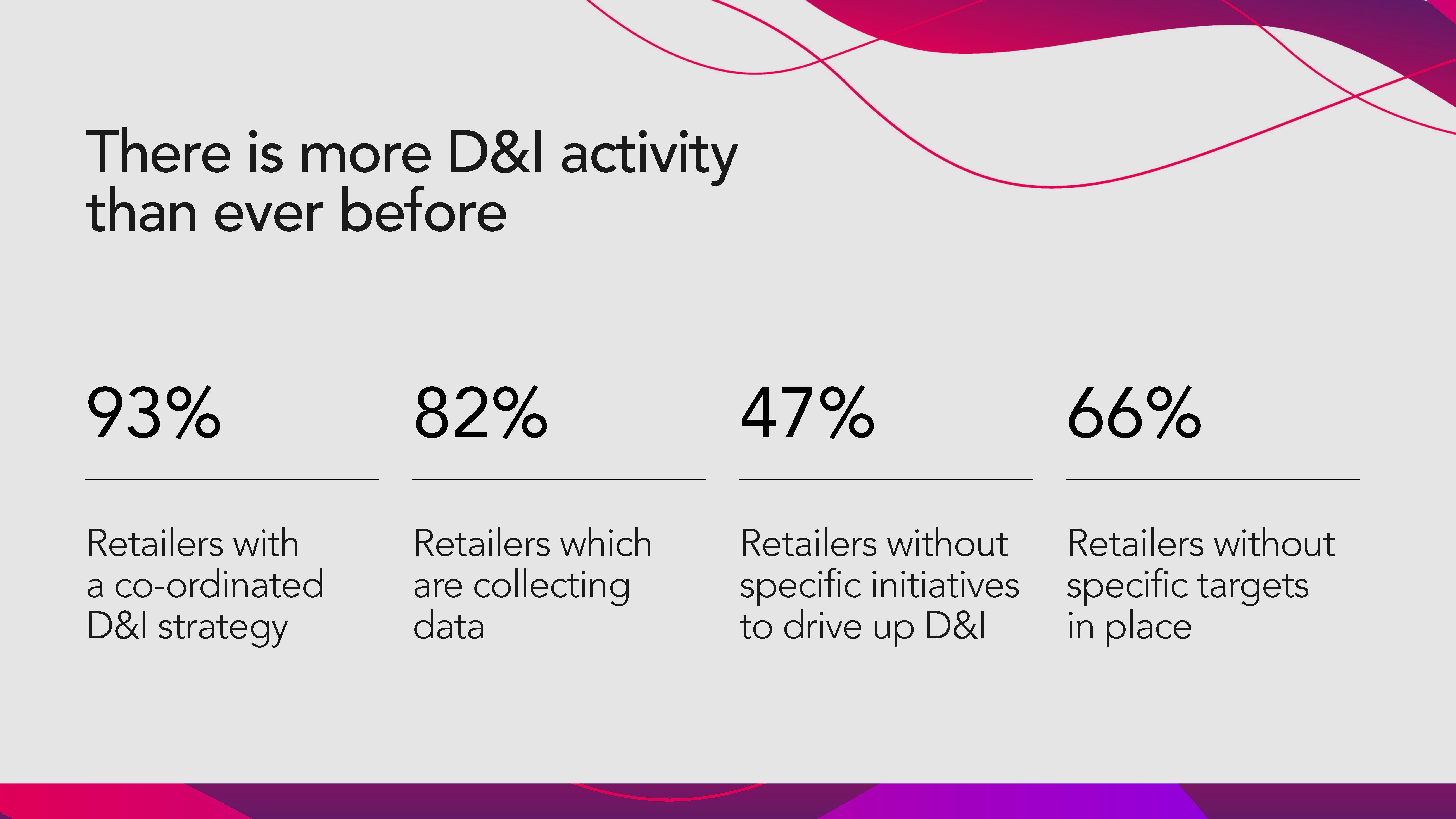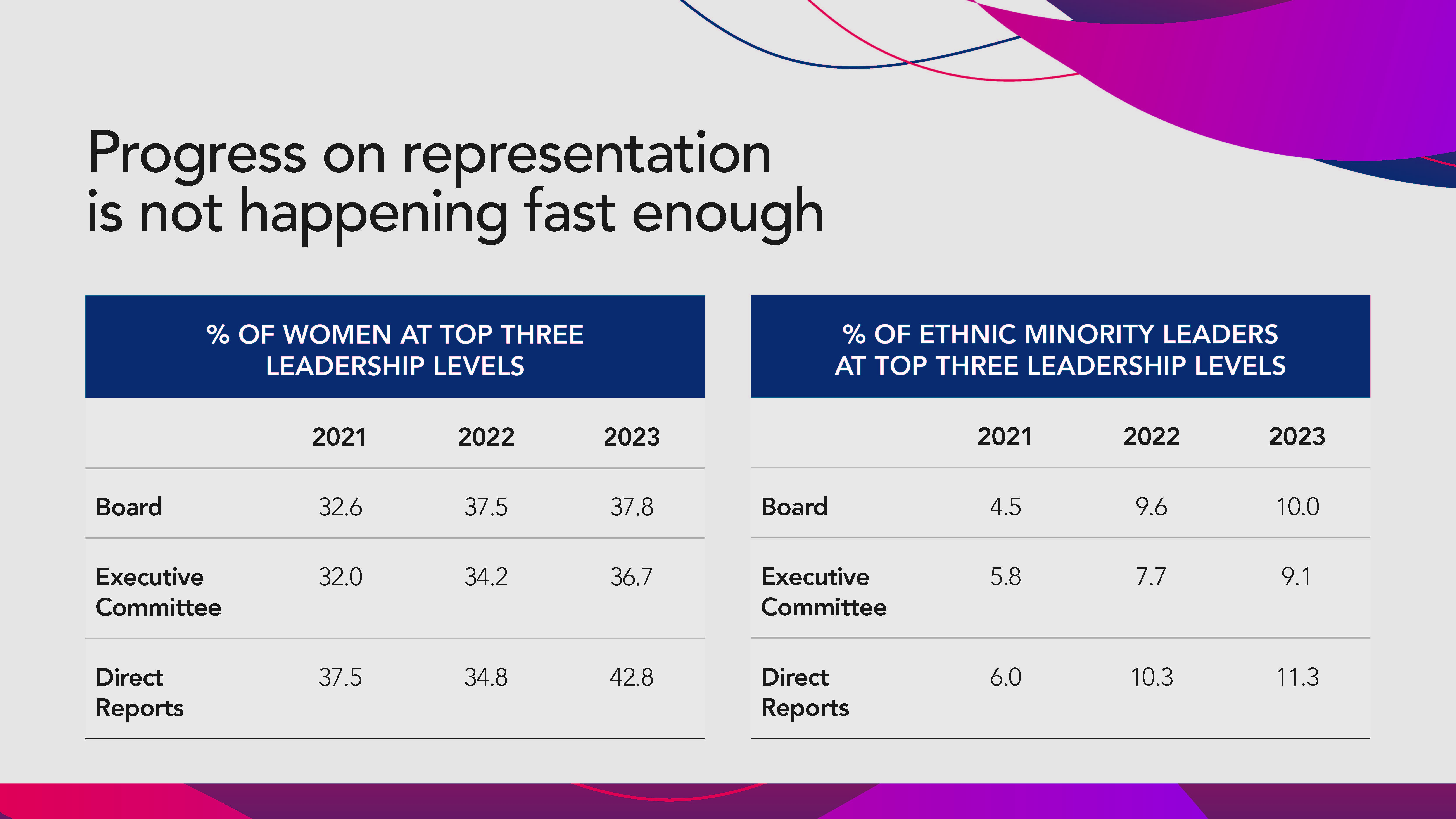Only a few short years ago, it was very hard to engage most retail leaders in diversity and inclusion: D&I simply wasn’t top of the corporate agenda. Few businesses had D&I strategies, there was poor data on diversity within retail businesses, and too often, D&I was something delegated to the HR Director to “sort” without much broader corporate engagement.
How times have changed! Together with our team at MBS, I’ve spent the past few months sitting down with retail Chairs, CEOs and CHROs to discuss D&I in their organisations – and the enthusiasm for and commitment to progress D&I is now palpable. Today’s most high-profile retail leaders are keen to tell their success stories, open about what hasn’t worked (and indeed, what still needs to change) and armed with countless examples of D&I initiatives that are in place within their business.
Our latest report, produced in partnership with the BRC, tracks this sea-change. Now in its third year, the publication lifts a lid on how diverse and how inclusive our retail industry is, analysing leadership diversity, workforce diversity, and feelings of inclusion among retail colleagues.
The report draws on three sources. First, MBS research, which encompasses data captured from the industry’s leading businesses through conversations with Chairs, CEOs and CHROs, and analysis of over 200 retailers’ leadership teams. Second, workforce data from the BRC survey of D&I Charter Signatories, which includes 48 retailers comprising a workforce of more than 1.2 million (almost 40% of the total UK retail workforce). Third, an assessment of inclusion based on the views of 2,000 individuals across different demographic characteristics in retail, using the Retail Trust’s “Better You” tool.
What we’ve found is that there has never been more D&I activity in retail – but that programmes, initiatives, and inclusion events are not yet translating into meaningful change.
There are certainly things to celebrate. Almost all businesses – 93% – now have a co-ordinated D&I strategy, and most (88%) are collecting data on diversity in their business. Dedicated leaders are being appointed to take ownership of the D&I agenda, more resources are being invested in training for senior leaders, and more budget is being set aside for D&I programmes.
Crucially, all this has happened against a deeply challenging commercial backdrop. When we published our first edition of this report back in 2021, we were in the midst of the pandemic. Alongside our second report, the war in Ukraine and cost-of-living crisis had just begun. This year, we face soaring inflation, additional supply chain pressures, looming regulatory pressures, and labour shortages. Leaders should be proud that D&I has continued to be a priority.
“This year, we face soaring inflation, additional supply chain pressures, looming regulatory pressures, and labour shortages. Leaders should be proud that D&I has continued to be a priority.”
However, we are still a long way off until retail businesses truly reflect the communities they serve – surely an imperative for any retailer looking to succeed in today’s complex trading landscape?
Take the proportion of women at leadership level, for example. While gender diversity has climbed over the past three years (see the below table for details), we still have a long road ahead to reach the 50/50 split which exists in society. Retail is also yet meet the benchmark of 40% women on Boards as set by the FTSE Women Leaders Review. Perhaps the biggest red flag for me is the startling lack of women role models in the most strategic senior roles of Chair, CEO and CFO. In these key leadership roles, within the 200 largest retail businesses there are just 13 women retail Chairs, 27 women CEOs and 14 women CFOs – with most retail businesses still having an all-white and male triumvirate in these key leadership roles. How can we expect more women to enter and progress through the industry if they don’t see role models at the highest levels?
Ethnic diversity also tells a story in two parts. On the one hand, it’s encouraging that the proportion of Board members from an ethnic minority background has nearly doubled since 2021. But on the other hand, progress has slowed dramatically since last year across the top-three leadership levels, and nearly a third of all retailers still have all-white Boards. Clearly, there is a lot of work to be done.
With all this in mind, the next leg of the D&I journey must be about taking a step back. Retailers mustn’t let a comprehensive calendar of inclusion events be a substitute for genuine traction and results.
“Retailers mustn’t let a comprehensive calendar of inclusion events be a substitute for genuine traction and results.”
As most retailers have now had a D&I strategy in place for several years now, the upcoming period is an opportunity for leaders to assess the impact of their efforts. Have their interventions and initiatives produced the results they were targeting? If so, are they happening fast enough? What has worked, and what hasn’t? Just as with any commercial objective, leaders need to know what is working and tweak the plan accordingly.
It may be that more targeted approaches should be put in place. For example, while nearly all businesses have programmes designed to promote inclusion, only half have specific initiatives to drive up representation of minority groups, and only a third have specific targets in place. For others, the next chapter could be defined by a ‘less is more’ approach to D&I. Indeed, some businesses are already adopting this.

Every year, this research is an important reminder of the influence of the retail industry. Retail employs more than three million people in the UK, and contributes more than £403bn to our economy. There is a commercial and a moral imperative to create the most diverse teams possible – not just for those working within the industry, but for everyone. To create the most innovative, productive and forward-looking retail industry we can, we need to truly embrace diversity and inclusion. Our report this year show progress in the right direction – and I am confident that with further focused, deliberate, and urgent action, more change can be delivered.
You can read the full report here. I’d love to hear what you think.










